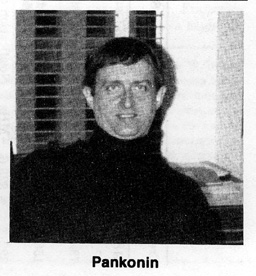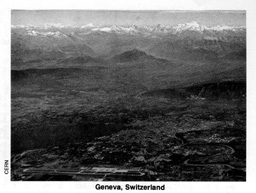
 The World Administrative Radio Conference (WARC), which was held in Geneva, Switzerland, during October and November 1979, performed a complete review of the International Radio Regulations which include a Table of Frequency Allocations. In the allocations table, the radio spectrum from 9 kHz to 275 GHz is partitioned into frequency bands for use by thirty-one radio communication services of which radio astronomy is one.
The World Administrative Radio Conference (WARC), which was held in Geneva, Switzerland, during October and November 1979, performed a complete review of the International Radio Regulations which include a Table of Frequency Allocations. In the allocations table, the radio spectrum from 9 kHz to 275 GHz is partitioned into frequency bands for use by thirty-one radio communication services of which radio astronomy is one.
The Radio Regulations are administered by the International Telecommunications Union (ITU), which is a specialized agency of the United Nations. Approximately 144 of the 154 member countries of the ITU sent a total of about 2200 delegates to the
WARC. The U.S. delegation numbered 65.
Radio astronomy was accepted as a radio service at the last general WARC in 1959, and it was awarded protection in a few frequency bands. However, it was a young science then, and its needs have greatly expanded and changed as it has matured. Now any band in the radio spectrum can be covered at one or more of the major radio observatories around the world. At the same time that the requirements of radio astronomy have become broader and more stringent, the competition for the limited spectrum has become increasingly severe.
Radio astronomy and some space services are unique in the radio communications field in that they are entirely passive, that is, they only receive and do not transmit. Also a typical observation requires a sensitivity to extremely low levels of radiation which makes radio astronomy particularly susceptible to man-made transmissions. The technical arm of the ITU, the
International Radio Consultative Committee (CCIR), has defined realistic levels of harmful interference to radio astronomy observations in a report, which severely restricts the possibilities of the active and radio astronomy services sharing a frequency band.
The convening of WARC-79 was announced several years ago, and radio astronomers have expended considerable effort to formulate an international position in order to present a united front. They have adopted the posture that protection should be sought:
(1) for continuum bands at octave intervals throughout the spectrum above 10 MHz with at least a 1 percent bandwidth in each band, and
(2) for approximately 20 lines emitted from molecules and atoms which are considered of prime astrophysical importance.
For the latter, the bandwidth should be ±0.1 percent (±300 kilometers per second Doppler shift) centered on the rest frequency of the line to accommodate, to a certain extent, the motions of the sources relative to the Earth. Continuum observations require relatively wide bandwidths for increased sensitivity, but the center frequencies of the bands are fairly flexible. On the other hand, the frequencies for spectral line observations are fixed by nature, and relatively narrow bandwidths are
sufficient.
Although the radio astronomers could agree fairly easily amongst themselves on the requirements of the science, proposals to the Conference could only be submitted by national members. National positions for the WARC were developed over several years, and the status of radio astronomy in a given nation's proposals largely depended on the success of radio astronomers in their domestic preparations. Hence, the radio astronomy positions of the countries varied widely. The last possibility for
negotiation was during the deliberations of the Conference itself, and there were radio astronomers on the delegations of Argentina (Bajaja), Australia (Whiteoak), Canada (Doherty), the Federal Republic of Germany (Grahl), India (Swarup), the Netherlands (Kahlmann and Schilizzi), Nigeria (Okoye), the Soviet Union (Dubinsky), the United Kingdom (Homer), and the United States (Pankonin).
The International Radio Regulations provide several levels for protecting radio services from mutual interference. The highest level of protection is a primary, exclusive allocation in a frequency band; that is, only one service is authorized to operate in a given band. The second level is also a primary status but the same band is shared on an equal basis with one or more additional services. The third level is called secondary, where a service is authorized to operate but may not interfere with other services in that band which have primary status. The fourth level offers no formal protection but is a notification that a service is using the band. This last type is often used for spectral line observations, and it simply calls attention to the use of the band by radio astronomy and asks for protection when practicable.
The protection for radio astronomy in the International Radio Regulations before and after WARC-79 is summarized in Tables 1 and 2. Radio astronomers certainly did not achieve all of their goals, but in general their position was improved at the WARC. Although considerable gains in formal protection were made at frequencies above 40 GHz, the most significant general improvement was in the standardization and strengthening of the radio astronomy footnotes. Radio astronomers have made liberal use of footnotes in many frequency bands, and the application of these has now been made consistent and uniform. Footnotes now appear in practically every band where radio astronomy has an allocation or notification of use, and the texts have been standardized. The new footnotes are of two types (applied as indicated in Table 2) which, with certain minor variations, all contain the wording given at the bottom of Table 2.
Other notable actions at the WARC include an article which was added to the Radio Regulations to emphasize some of the special problems faced by radio astronomers, and to give examples of the practicable steps for protection which are alluded to in the footnotes.
Radio astronomers have long realized that the far side of the Moon could provide a protected zone which is naturally shielded from transmissions on or near the Earth, and that at some point in the future it may be necessary and feasible to operate from such a distant base. An article was added to the Radio Regulations giving protection to radio astronomy and other passive services in the lunar shielded zone over most of the radio spectrum. Also a footnote was inserted in appropriate bands calling attention to the search for signals transmitted by extra-terrestrial intelligence (SETI) which reads as follows:
In the bands 1400 to 1427 MHz, 101 to 120 GHz, and 197 to 220 GHz, passive research is being conducted by some countries in a programme for the search for intentional emissions of extra-terrestrial origin.
The radio regulations which were formulated at the WARC-79 have the force of an international treaty for a country once the Final Acts are signed (and in the United States ratified by the Senate). According to the schedule, the new radio regulations will take effect January 1, 1982, and they are expected to remain in force without major revision until the end of this century. These regulations, however, only provide for the allocation of frequency bands to radio services on the international level. Additional protection for radio astronomy is necessary and can be achieved by enlightened assignment of frequencies within a band to stations of an authorized service, by effective compliance checking, and by adequate technical standards for
equipment. All of these areas are tasks of the individual national administrations. Thus, the radio astronomers' efforts do not end with WARC-79. Representation must also be maintained in the daily regulatory process in each country.

 Vernon Pankonin was born in Ogallala, Nebraska, in 1946. He received the B.S. degree in physics and mathematics from the University of Nebraska (Lincoln) in 1968 and the Ph.D. degree in astronomy from Cornell University in 1973. He was guest scientist and later assistant staff scientist at the Max-Planck-Institute for Radioastronomy, Bonn, West Germany from 1973 to
1979. Since September 1979 he has been Radio Spectrum Manager at the U.S. National Science Foundation, Washington, D.C. Dr. Pankonin was an official U.S. delegate to the WARC-79 conference in Geneva, Switzerland.
Vernon Pankonin was born in Ogallala, Nebraska, in 1946. He received the B.S. degree in physics and mathematics from the University of Nebraska (Lincoln) in 1968 and the Ph.D. degree in astronomy from Cornell University in 1973. He was guest scientist and later assistant staff scientist at the Max-Planck-Institute for Radioastronomy, Bonn, West Germany from 1973 to
1979. Since September 1979 he has been Radio Spectrum Manager at the U.S. National Science Foundation, Washington, D.C. Dr. Pankonin was an official U.S. delegate to the WARC-79 conference in Geneva, Switzerland.
![[NAAPO Logo]](../../Images/NAAPOsm.jpg)
![[NAAPO Logo]](../../Images/NAAPOsm.jpg)